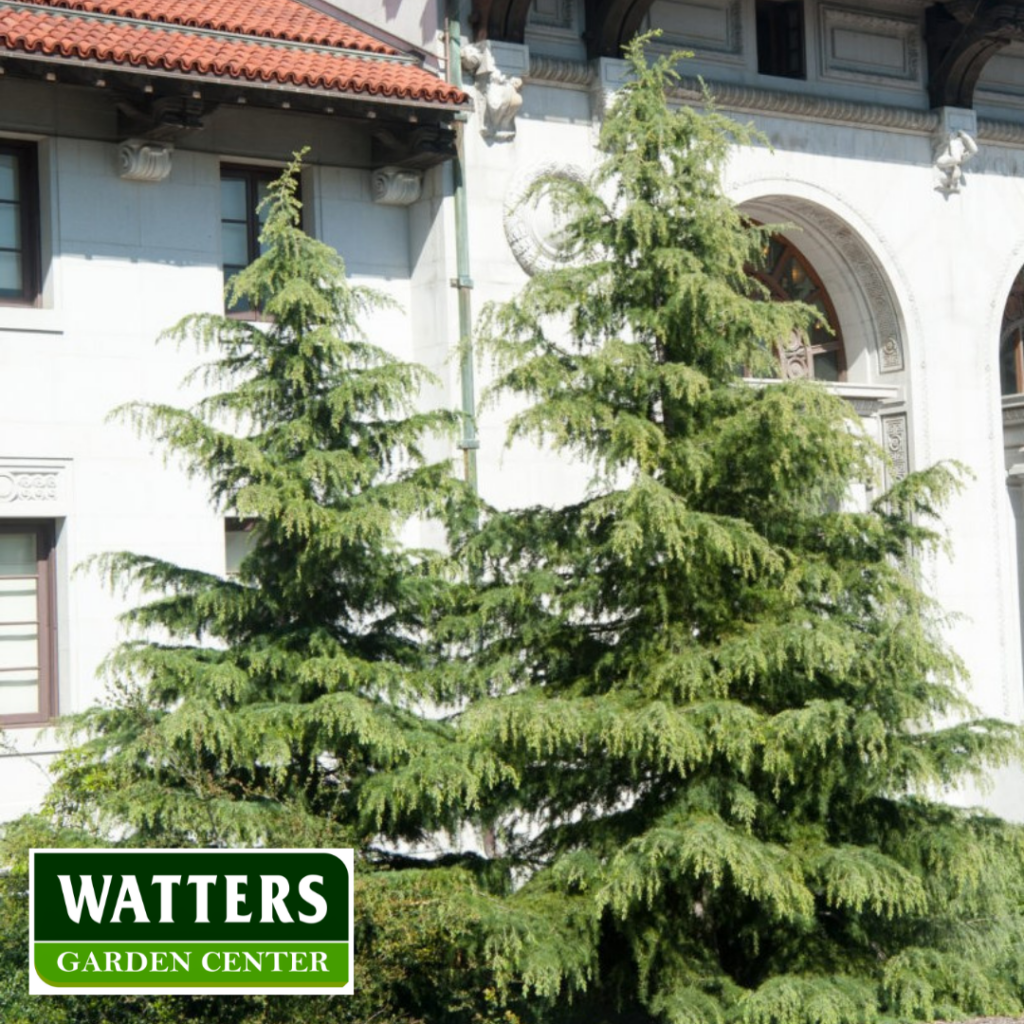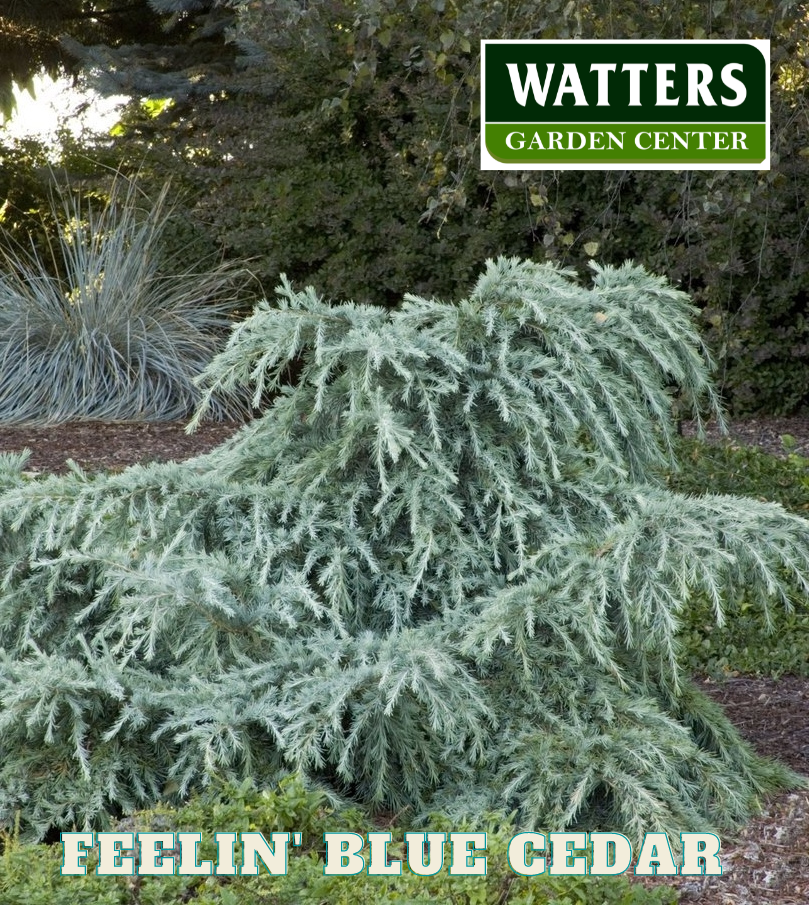by Ken Lain, the mountain gardener


The Deodar cedar, Cedrus deodara, is an evergreen conifer favored for its gracefully drooping branches. It is often used as a specimen tree on large properties and parks, often used to line streets. This species is the national tree of Pakistan and garnered the ‘Award of Garden Merit’ from the Royal Horticultural Society.
True cedar. The Pinaceae family includes both evergreen and deciduous conifers such as pine, spruce, and fir trees. Other cedars in the family include the Cedar of Lebanon and the Statehood tree on the Prescott Courthouse square, Atlas cedar. The name deodar evolved from the word devadāru, a Sanskrit word that translates to “timber of the gods.” It is considered sacred in Hinduism.
Botanical Name Cedrus deodara
Common Name Deodar Cedar, Himalayan Cedar
Plant Type Evergreen coniferous tree
Mature Size 60′ feet tall, 25′ feet wide
Sun Exposure Full sun 6+ hours
Soil Type Well-drained
Soil pH Adapts well to alkaline soils
Hardiness Zones 7 to 9
Native Area Western Himalayas
How to Grow Deodar Cedars
Reaching 250′ feet in its native Himalayan setting, local trees grow between 40 and 70′ feet tall. They grow at a modest pace, adding 24″ inches per year. The tree needs space because of its beautiful weeping branches, which extend 25′ feet wide. Give this tree plenty of space, a sunny spot with well-drained soil. Avoid planting this cedar in areas that get a lot of wind. Colorado Spruce is a better choice in windy landscapes.
1. Dig a hole 2-3 times the container’s width but the same depth.
2. Check drainage by filling the hole with water. All water should drain away within 12 hours. If not, you have hardpan soil, and it will need to be penetrated – dig deeper & add a layer of gypsum.
3. Watters “Premium Mulch” – Blend 1 part mulch with two parts soil taken from the hole.
4. Score the root ball sides and bottom with a utility knife or pruners.
5. Blend Soil – Mulch – 7-4-4 Plant Food & Aqua Boost mixture, then pack firmly around the root ball.
6. Stakes & V-Strap – install stakes just outside the roots making sure the stakes are deeper than the soil mix. Remove original shipping stake. Use V-Straps around tree trunks to support trees from wind. Use one strap under the tree canopy and a second 18″ below the first. If necessary, use a small nail or screw on the lodgepole to stop the wire from slipping.
7. Build a well around the tree and water it with “Root & Grow” mixture. Water with Root & Grow every 2 weeks for the first 2 months. Use remaining Watters Mulch inside the tree well as a top dressing. This will keep weeds down, insulate roots from heat and cold, and keep the roots moist.
Light
A planting site with full sun, 6+ hours during the growing season, is best.
Soil
Cedars are very adaptable but require well-drained soil. Watters Premium Mulch makes it easier for your plant to settle in when planting in heavy clay soil.
Water newly planted trees regularly with a garden hose for at least one month (2 months in Summer). Automatic irrigation systems may not be sufficient initially. Water frequency will vary according to the season, exposure, and plant size.
April-Oct – Cedar should be irrigated 2 x weekly.
Nov-March – Cedars should be irrigated 2 x monthly.
Plant Food
Keep this evergreen tree happy by feeding 3x times per year with 7-4-4 All Purpose Food (March, July, and October).

- Albospica – A slow-growing cultivar with white or silver foliage.
- Aurea – Features horizontal branches and golden needles; first described by botanist J. Nelson in 1866.
- Golden Horizon – A dwarf variety that grows quickly but only up to 10′ feet and has golden needles that turn yellow-green in the summer.
- Feelin’ Blue – is a dwarf variety that features blue-green foliage and weeping branches that grows to 5′ feet tall and wide.
- Kashmir – showcases silvery blue-green foliage and can tolerate below-zero temperatures.
Pruning
Deodar cedar is a low-maintenance tree. The only pruning needed is to remove any branches that have become dead, damaged, or diseased before new growth begins in the spring. If you need to prune, use extreme care, it’s easy to cut away too much green that won’t grow back, leading to the tree’s death
Common Pests/ Diseases
Giant conifer aphids attack deodar cedar, though these infestations do not usually affect the tree enough to severely injure it. Tree aphids produce a sticky liquid called honeydew which falls to the ground making everything tacky. Aphids are easily handled with high-pressure sprayers that administer Watters Cyonara insecticide. In the spring, apply Watters Plant Protector for year-long protection.
Until next week, I’ll be helping homeowners choose the fastest growing evergreen for their landscape.
Ken Lain can be found throughout the week at Watters Garden Center, 1815 Iron Springs Rd in Prescott, or contacted through his website at WattersGardenCenter.com or Top10Evergreens.com.

